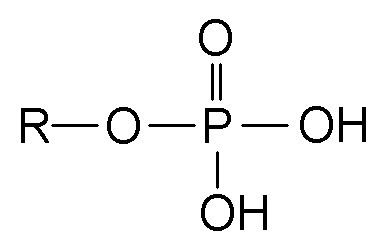Hypophosphatemia is an electrolyte disturbance in which there is an abnormally low level of phosphate in the blood. The condition has many causes, but is most commonly seen when malnourished patients (especially chronic alcoholics) are given large amounts of carbohydrates, which creates a high phosphorus demand by cells, removing phosphate from the blood (refeeding syndrome).Because a decrease in phosphate in the blood is sometimes associated with an increase in phosphate in the urine, the terms hypophosphatemia and "phosphaturia" are occasionally used interchangeably; however, this is improper since there exist many causes of hypophosphatemia besides overexcretion and phosphaturia, and in fact the most common causes of hypophosphatemia are not associated with phosphaturia.
Signs and symptoms
Muscle dysfunction and weakness – This occurs in major muscles, but also may manifest as: diplopia, low cardiac output, dysphagia, and respiratory depression due to respiratory muscle weakness.Mental status changes – This may range from irritability to gross confusion, delirium, and coma.White blood cell dysfunction, causing worsening of infections.Instability of cell membranes due to low adenosine triphosphate (ATP) levels – This may cause rhabdomyolysis with increased CPK, and also hemolytic anemia.Increased affinity for oxygen in the blood caused by decreased production of 2,3-BPG.Large pulp chambers in the teeth.Refeeding syndrome – This causes a demand for phosphate in cells due to the action of hexokinase, an enzyme that attaches phosphate to glucose to begin metabolism of glucose. Also, production of ATP when cells are fed and recharge their energy supplies requires phosphate.Respiratory alkalosis – Any alkalemic condition moves phosphate out of the blood into cells. This includes most common respiratory alkalemia (a higher than normal blood pH from low carbon dioxide levels in the blood), which in turn is caused by any hyperventilation (such as may result from sepsis, fever, pain, anxiety, drug withdrawal, and many other causes). This phenomenon is seen because in respiratory alkalosis carbon dioxide (CO2) decreases in the extracellular space, causing intracellular CO2 to freely diffuse out of the cell. This drop in intracellular CO2 causes a rise in cellular pH which has a stimulating effect on glycolysis. Since the process of glycolysis requires phosphate (the end product is adenosine triphosphate), the result is a massive uptake of phosphate into metabolically active tissue (such as muscle) from the serum. It is interesting to note, however, that this effect is not seen in metabolic alkalosis, for in such cases the cause of the alkalosis is increased bicarbonate rather than decreased CO2. Bicarbonate, unlike CO2, has poor diffusion across the cellular membrane and therefore there is little change in intracellular pH.Alcohol abuse – Alcohol impairs phosphate absorption. Alcoholics are usually also malnourished with regard to minerals. In addition, alcohol treatment is associated with refeeding, and the stress of alcohol withdrawal may create respiratory alkalosis, which exacerbates hypophosphatemia (see above).Malabsorption – This includes GI damage, and also failure to absorb phosphate due to lack of vitamin D, or chronic use of phosphate binders such as sucralfate, aluminum-containing antacids, and (more rarely) calcium-containing antacids.Primary hypophosphatemia is the most common cause of nonnutritional rickets. Laboratory findings include low-normal serum calcium, moderately low serum phosphate, elevated serum alkaline phosphatase, and low serum 1,25 dihydroxy-vitamin D levels, hyperphosphaturia, and no evidence of hyperparathyroidism.
Other rarer causes include:
Certain blood cancers such as lymphoma or leukemiaHereditary causesLiver failureTumor-induced osteomalaciaHypophosphatemia is caused by the following three mechanisms:
Inadequate intake (often unmasked in refeeding after long-term low phosphate intake)Increased excretion (e.g. in hyperparathyroidism, hypophosphatemic rickets)Shift from extracellular to intracellular space. This can be seen in treatment of diabetic ketoacidosis, refeeding, short-term increases in cellular demand (e.g. hungry bone syndrome) and acute respiratory alkalosis.Standard intravenous preparations of potassium phosphate are available and are routinely used in malnourished patients and alcoholics. Oral supplementation is also useful where no intravenous treatment are available. Historically one of the first demonstrations of this was in concentration camp victims who died soon after being re-fed: it was observed that those given milk (high in phosphate) had a higher survival rate than those who did not get milk.
Monitoring parameters during correction with IV phosphate
Phosphorus levels should be monitored after 2 to 4 hours after each dose, also monitor serum potassium, calcium and magnesium. Cardiac monitoring is also advised.
